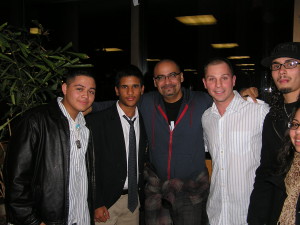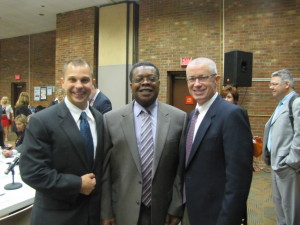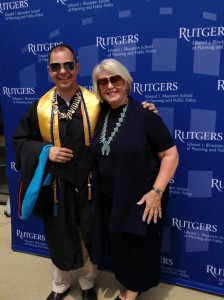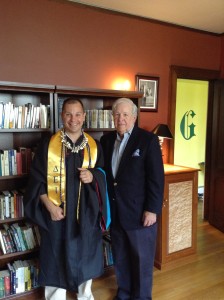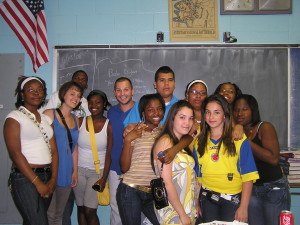There is an interesting bill before Congress right now that attempts to address a number of issues regarding addiction and recovery that I believe make a great deal of sense. It is both forward thinking and comprehensive, but it does not address what I view to be the biggest issue facing addiction treatment and recovery support in this country – the reluctance of insurance companies to pay for addiction treatment. This is not the fault of the lawmakers and policy wonks who wrote this bill, but rather the failure to implement and enforce the Mental Health Parity Act of 1996, the Mental Health Parity and Addiction Equity Act of 2008 and the Affordable Care Act of 2010. Each act attempted to address the fact that insurance companies either (a) do not pay for mental health and/or addiction treatment or (b) pay for treatment but to a much lesser extent than other illnesses.
Since I chaired the Task Force on Heroin and Other Opiates in 2012, I have heard from at least one parent a week of a young person who died – all of the stories are heart wrenching and a number of the deaths were because the patient was either discharged from treatment too early when insurance ran out or they never could get treatment paid for by their insurance companies in the first place. I spent the last four years working on a Masters in Public Policy in my spare time, and all my work for one class was devoted to the history and implementation of the aforementioned bills.
Both papers are well over 20 pages long. If you are interested in this kind of minutia, you can find both the history and the implementation paper on the policy section of my site (click here). For those of you that want an executive summary, read on.
_________________________________________________
Third-party payers (including insurance companies) began to pay for mental health treatment after World War II . At that time, people either (a) were treated at in-patient mental health hospitals that were run for and paid for by the state or (b) rarely got treatment. The late 1950’s through the mid-1970’s brought a period of deinstitutionalization, which involved the closing of in-patient mental health hospitals and sending patients to community mental health centers. Deinstitutionalization caused a rise in third-party payments for treatment and a resultant restriction on services. In 1961, President John F. Kennedy forced the Federal Employees Health Benefits Program (FEHBP) to cover mental health treatment with the same level that physical medical care was covered. Federal employees enjoyed this unique benefit until 1975, when it was severely cut back.
The first major national law that set aside funds for addiction treatment was the Comprehensive Drug Abuse Prevention and Control Act of 1970. It was championed by Senator Harold Hughes, passed by the 91st Congress and signed into law by President Richard M. Nixon. Senator Hughes was an Army veteran and a trucker who had a drinking problem and almost committed suicide in 1952. He joined Alcoholics Anonymous and eventually went into politics. He created a treatment program for people with alcohol dependence while he has Governor of Iowa during the 1960’s. His willingness to talk about his own experiences and his work helping others moved other members of Congress and President Nixon into passing the CDAPCA . This would be the last major national legislation that addressed substance abuse treatment for a few decades.
During the 1970’s and 1980’s and early 1990’s, a number of state legislatures made attempts to address parity by creating minimum benefits for mental health (17 states), drug treatment (24 states) and alcoholism (37 states). In 1992, Senator John Danforth (R-MO) and Senator Domenici introduced the first bill that proposed mental health parity. It did not go anywhere, but their ideas were co-opted by President William J. Clinton into his health care plan in 1993-94 . President Clinton’s health care policy would eventually fail to pass as well. In 1995 Senator Domenici partnered with Senator Paul Wellstone (D-MIN) to craft a wide-ranging parity bill and attach it to the Health Insurance Portability and Accountability Act (HIPAA). The Congressional Budget Office reported that the bill would add costs of 4% to private health plans. The bill died.
The Mental Health Parity Act (MPA) of 1996 was introduced and championed by Senators Domenici and Wellstone. It was both a political and a personal issue for them, as Senator Domenici’s daughter lived with schizophrenia and Senator Wellstone’s brother had been hospitalized for depression for two years in college. After much debate and negotiation, a very limited bill was passed that did not mandate mental health coverage (and did not address substance abuse coverage at all). A disappointed but resolute Senator Wellstone acknowledged that it was just a “first step” toward full parity.
Over the next twelve years, the battle for parity was taken up by grass roots organizations such as the National Alliance of the Mentally Ill (NAMI), governmental research organizations like the National Institute of Mental Health (NIMH), professional organizations including the National Association of Social Workers (NASW), the American Psychological Association (APA) and the American Society of Addiction Medicine (ASAM) , as well as a new generation of politicians including Representatives Patrick Kennedy (D-RI) and Jim Ramstad (R-MN), both of whom were public about being recovering alcoholics .
A common refrain argued by those that opposed parity was that it would drive up costs. Those opponents included insurance companies and employer groups, and they were able to defeat a couple of lesser attempts at expanding parity with the rejection of the Mental Health Equitable Treatment Act (MHETA) of 2001 and again in 2002. Undaunted, parity advocates pushed for more and better research and eventually the Congressional Budget Office (CBO) published a report that took into account the effects of managed care and showed that parity did not lead to an increase in health care costs.
This (and other) research combined with the public testimony of the personal experiences of Senator Domenici, Senator Ted Kennedy (D-MA), Representatives Kennedy and Ramstad, and a collapsing economy in the fall of 2008 were able to get the Mental Health and Addiction Parity Act (MHPAEA) passed by the 110th Congress and signed into law by President George W. Bush as a rider on the Emergency Economic Stabilization Act of 2008. “The MHPAEA prohibited differences in treatment limits, cost sharing, and in- and out- of network coverage. It also applied to the treatment of substance disorders, which the MHPA did not address.”
It was hailed as a major victory by parity advocates. And then it got bogged down in the rule-making process. Despite leaving public office at the end of 2010, Patrick Kennedy has continued to advocate for parity. In October of 2013, he announced a new collaboration of stakeholders, political figures and experts called the Kennedy Forum. In a speech before the Senate on November 7, 2013, he lamented the delays of the previous five years:
Five years ago, when my father and I sponsored the Mental Health Parity and Addiction Equity Act (MHPAEA) and shepherded it through the House and Senate, we thought its signing by President Bush was the end of a process. In fact, it was barely the beginning… Just to recap, MHPAEA was passed and signed into law on October 3, 2008, and its provisions became effective exactly one year later. Many insurance plans follow the calendar year; the effective date for them was January 1, 2010. The Interim Final Rule for MHPAEA was issued on February 2, 2010, effective April 5, 2010, and applicable to plans beginning on or after July 1, 2010. We have been waiting for the Final Rule ever since then – over three years.
It has been 6 ½ years since the MHPAEA was signed into law by President Bush, 5 ½ years since it became an active law, 5 years since the Interim Final Rules were released and 1 ½ since the Final Rules were published. The lag between the signing of the law and the release of the final rules led to a prolonged period of murkiness. Additionally, the passage of the Affordable Care Act in 2010, the antipathy of the post-2010-election Republican dominated House of Representatives towards the ACA, and the two year wait until the Supreme Court issued its decision upholding the ACA added to the confusion regarding parity. Employer groups and insurance companies sometimes used these lags, legislative turmoil and legal battles to delay implementation of parity. That said, some of them have offered assistance to the public. In order to help providers and consumers understand this complex law and its constant updates, insurance companies like Aetna and advocacy organizations such as NAMI have posted instructions and frequently asked question pages.
The future of parity can probably be best summed up by an exchange that took place at a panel discussion at the 2014 annual conference of the New Jersey Association of Mental Health and Addiction Agencies (NJAMHAA). The panel was on the Governor’s Task Force on Heroin and Opiate’s report, but a number of questions were asked about parity. The following conversation took place between an Executive Director of a hospital based in-patient mental health program and Dr. Louis Baxter, the past-president of the American Society of Addiction Medicine (ASAM – he is also my friend):
ED: Will the Affordable Care Act actually ensure that insurance companies pay for the treatment of my patients?
Dr. Baxter: Yes.
ED: Multiple insurance companies are continuing to deny coverage, despite the fact that I have a number of well-regarded licensed professionals that have fully documented why our patients need treatment.
Dr. Baxter: I know. It is unfortunate. The delays and lack of instruction from the feds encouraged the insurance companies to drag their feet. But the law is there and they must obey.
ED: They are not…
Dr. Baxter: (interrupting) I know. I know what you are going to say. They are still not paying. They are denying claims. They are clearly violating the Parity Act and the Affordable Care Act. The answer is a combination of litigation and enforcement. A number of consumers and providers will have to sue insurance companies in order to get them to follow the laws.
ED: (interrupting) That could take years.
Dr. Baxter: Yes, probably five or so. But the insurance companies will lose and the government will do a better job of enforcing it. It’s a process. A long one. I know that this is discouraging folks, but parity will happen. It will just require the great American tradition of litigation.
As in the cases of other rule making, implementation will depend upon litigation (that happens to be the case with most rule-making; it’s true of stream pollution and other environmental and ecological violations, although in many of those cases the suit is brought by state and federal agencies). In the matter of health care it’s the individual who has been slighted that is going to have to sue. That places an unfair burden on the individual, but that has been the case before, during and after the parity law movement.

